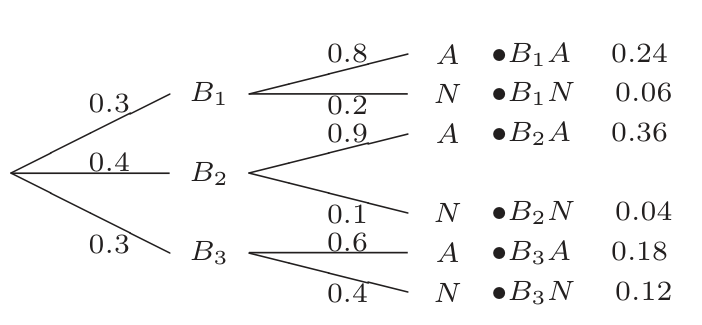Theory 1
A tree diagram depicts the components of a multi-stage experiment. Nodes, or branch points, represent sources of randomness.

An outcome of the experiment is represented by a pathway taken from the root (left-most node) to a leaf (right-most node). The branch chosen at a given node junction represents the outcome of the “sub-experiment” constituting that branch point. So a pathway encodes the outcomes of all sub-experiments.
Each branch from a node is labeled with a probability number. This is the probability that the sub-experiment of that node has the outcome of that branch.
- The probability label on some branch is the conditional probability of that branch, assuming the pathway from root to prior node.
- In the example:
. - Therefore, branch labels from given node sum to 1. (Law of Total Probability)
- In the example:
- The probability of a given (overall) outcome is the product of the probabilities on each branch of the pathway to that outcome.
- Makes sense, because (e.g.):
- More generally: remember that (e.g.):
- This overall outcome probability may be written at the leaf.
- Makes sense, because (e.g.):
One can also use a tree diagram to remember quickly how to calculate certain probabilities.
For example, what is
For example, what is